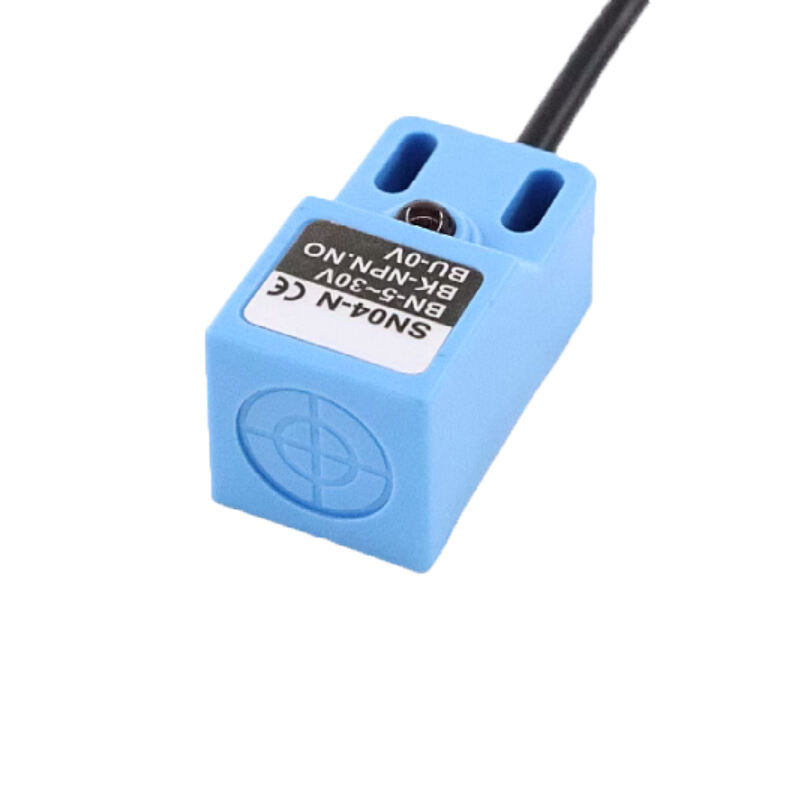Understanding the Impact of Proximity Sensing Technology
The industrial world has been revolutionized by proximity sensors, sophisticated devices that detect the presence or absence of objects without physical contact. These versatile sensors have become integral components in manufacturing, automation, and everyday applications, transforming how we interact with technology and control various processes. From automated doors at supermarkets to complex manufacturing assembly lines, proximity sensors serve as the invisible eyes and hands of modern machinery.
As industries continue to evolve and embrace automation, proximity sensors have emerged as crucial tools for enhancing efficiency, safety, and precision in countless applications. Their ability to detect objects without physical contact makes them invaluable in situations where traditional mechanical switches would be impractical or potentially harmful.
Operational Excellence Through Sensor Technology
Enhanced Production Efficiency
Proximity sensors dramatically improve manufacturing efficiency by enabling continuous, automated monitoring of production processes. These sensors can detect parts moving along assembly lines, verify proper positioning, and trigger subsequent operations with millisecond precision. This level of automation reduces human error and increases throughput significantly.
In modern manufacturing facilities, proximity sensors work tirelessly to maintain optimal production speeds while ensuring quality control. They can detect misaligned components, verify proper assembly, and prevent potential equipment damage by stopping machinery when objects are incorrectly positioned.
Maintenance Cost Reduction
The non-contact nature of proximity sensors eliminates mechanical wear and tear associated with traditional physical switches. This characteristic substantially reduces maintenance requirements and extends the operational lifespan of equipment. Unlike mechanical switches that deteriorate with repeated use, proximity sensors can perform millions of operations without degradation in performance.
Additionally, these sensors require minimal calibration and adjustment over time, further reducing maintenance costs and downtime. Their solid-state construction makes them highly reliable in harsh industrial environments where dust, vibration, and temperature variations could compromise other sensing technologies.

Safety and Environmental Advantages
Worker Protection Enhancement
Safety is paramount in industrial settings, and proximity sensors play a crucial role in protecting workers. These sensors can create invisible safety barriers around dangerous machinery, automatically stopping equipment when personnel enter hazardous areas. This capability has significantly reduced workplace accidents and improved overall operational safety.
Modern proximity sensors can be integrated into sophisticated safety systems that comply with international safety standards. They provide reliable detection even in challenging conditions, ensuring consistent protection for workers regardless of environmental factors such as lighting, noise, or atmospheric conditions.
Environmental Impact Reduction
The implementation of proximity sensors contributes to environmental sustainability in several ways. Their energy-efficient operation helps reduce power consumption compared to traditional sensing methods. Additionally, their long operational life means fewer replacement parts and less electronic waste over time.
In applications such as automated lighting systems, proximity sensors help conserve energy by ensuring lights are only activated when needed. This smart control extends to various other systems, from HVAC controls to water conservation in commercial buildings.
Advanced Application Capabilities
Versatile Detection Options
Modern proximity sensors come in various types, each optimized for specific applications. Inductive sensors excel at detecting metallic objects, while capacitive sensors can detect both metallic and non-metallic materials. Photoelectric sensors offer long-range detection capabilities, and ultrasonic sensors perform well in dusty or wet environments.
This versatility allows engineers to select the most appropriate sensor technology for their specific application requirements. Whether detecting aluminum cans on a conveyor belt or monitoring fluid levels in a tank, there's a proximity sensor solution available.
Smart Manufacturing Integration
In the era of Industry 4.0, proximity sensors have evolved to become smart devices capable of providing detailed data about their operation and the objects they detect. These sensors can now communicate via industrial networks, providing real-time data for process optimization and predictive maintenance.
The integration capabilities of modern proximity sensors enable them to work seamlessly with manufacturing execution systems (MES) and enterprise resource planning (ERP) systems. This connectivity facilitates data-driven decision-making and enables truly automated manufacturing processes.
Economic Benefits and ROI
Operational Cost Reduction
The implementation of proximity sensors often results in significant operational cost savings. By automating detection and monitoring tasks, these sensors reduce labor costs while increasing productivity. The precision and reliability they provide minimize waste and improve product quality, directly impacting the bottom line.
Companies that invest in proximity sensor technology typically see returns through reduced scrap rates, improved throughput, and lower quality control costs. The initial investment in sensor technology is often recovered within months through these operational improvements.
Long-term Value Creation
Beyond immediate operational benefits, proximity sensors contribute to long-term value creation through improved process control and data collection capabilities. The insights gained from sensor data enable continuous process improvement and help organizations maintain competitive advantages in their respective markets.
The scalability of proximity sensor systems allows organizations to expand their capabilities as needs grow, protecting their initial investment while providing pathways for future advancement. This flexibility ensures that organizations can adapt to changing market demands without major system overhauls.
Frequently Asked Questions
How long do proximity sensors typically last?
Proximity sensors generally have a very long operational life, often exceeding 10 million operations when properly installed and maintained. Their solid-state construction means they can continue functioning reliably for many years in normal operating conditions.
Can proximity sensors work in harsh environments?
Yes, many proximity sensors are specifically designed for harsh industrial environments. They can operate reliably in conditions with extreme temperatures, high humidity, dust, and chemical exposure. The key is selecting the appropriate sensor type and protection rating for the specific environment.
What maintenance do proximity sensors require?
Proximity sensors require minimal maintenance compared to mechanical switches. Regular cleaning of the sensing surface, occasional checking of mounting hardware, and verification of alignment are typically all that's needed. Some smart sensors also provide self-diagnostic capabilities to alert users of potential issues before failures occur.

